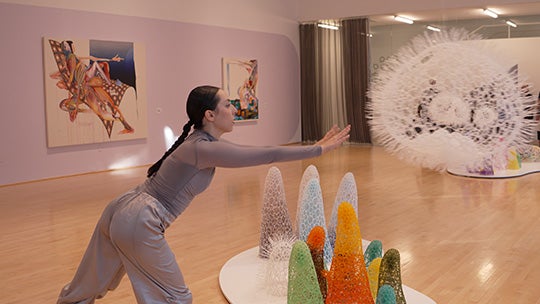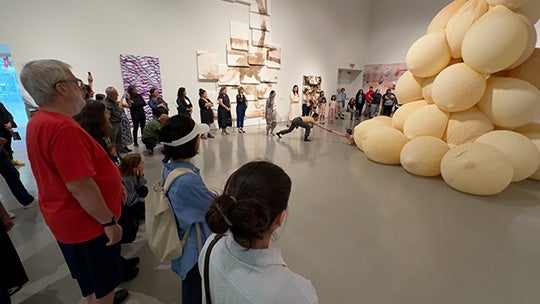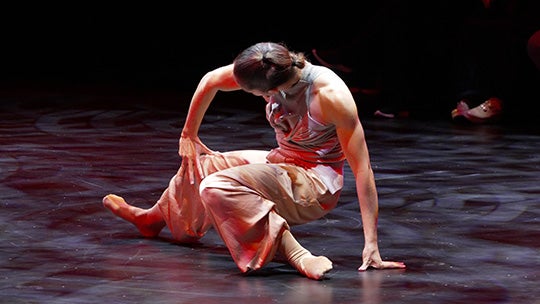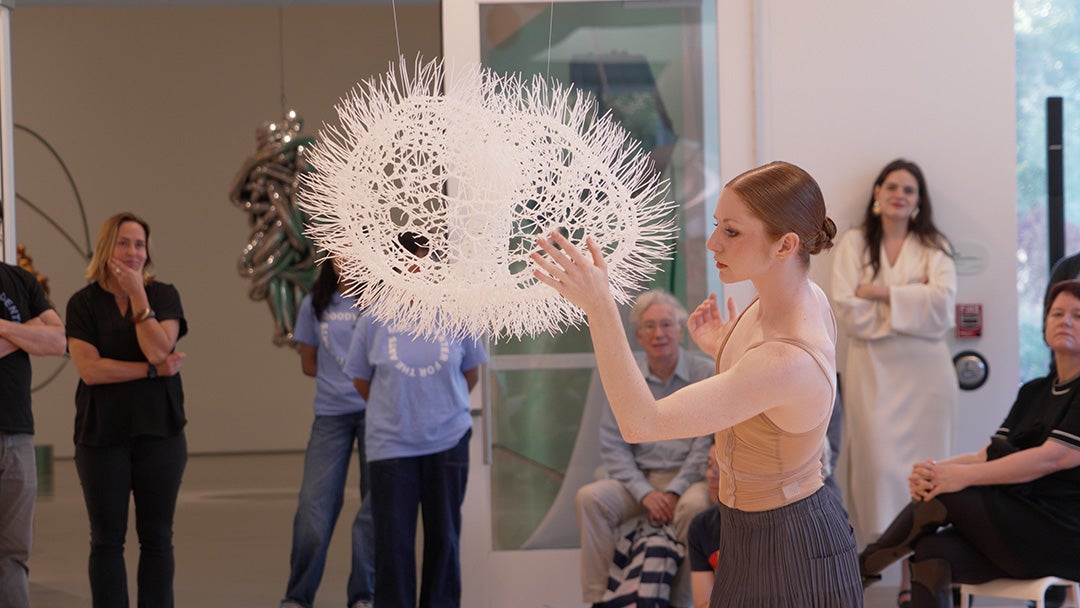When audiences entered the Moody Center for the Arts at Rice University Oct. 9, they were invited to activate its spaces with their own movement. That evening, choreographer Gabrielle Lamb and her New York-based company Pigeonwing Dance transformed the “Bio Morphe” exhibition into a living organism, leading spectators through the galleries and into the Lois Chiles black box theater. As part of the Moody’s Dimensions Variable series, which invites creative responses to the exhibition on view, Lamb presented an exploration of how the human body interacts with art, nature and science.

“This has been a really special and unusual experience,” Lamb said, who noted that she had prepared about 15 minutes of the nearly hourlong performance before arriving in Houston. “The rest of it has been created here at the Moody Center for the Arts in the galleries in response to the art of the ‘Bio Morphe’ exhibit.”
Lamb and her dancers choreographed around, and at times within, the sculptures, paintings and suspended objects of “Bio Morphe.” With the exhibiting artists’ permission, the movement included a physical interaction that considered the art’s weight, balance and resistance.
“The dancers that I brought with me, our process is always collaborative, but I would say here they’ve been especially creative and have taken a lot more initiative even than usual,” Lamb said. “They filled in the gaps with their own ideas. So it’s been a wonderful collaborative experience with the dancers in response to the artists.”
Lamb’s evolving choreography blurred the boundaries between dancer and installation. While early rehearsals relied on video footage of the exhibition, the works revealed new dimensions once experienced in person.

“Once we were here in the galleries, particularly the Christina Quarles paintings in the central gallery, they’re so saturated and vivid and they have so much movement in them that, in fact, when you are in the room with them, they really do stand out and demand interaction,” Lamb said.
A 2020 Guggenheim Fellow and 2024 Hearst Choreographer in Residence at Princeton University, Lamb has built an international reputation for integrating scientific and artistic inquiry. Her dance performance “The Choreography of CRISPR” commissioned by the MIT Museum translates gene editing into movement.
“After seeing Gabrielle’s CRISPR performance, I was taken by how her exceptional sensitivity to the natural world and the nuances of science informs her movement,” said Alison Weaver, the Suzanne Deal Booth Executive Director of the Moody Center for the Arts.

Weaver invited her to be part of the Moody’s fall 2025 programming, building on Lamb’s connection to Luis Campos, the Baker College Associate Professor for History of Science, Technology and Innovation, who organized Rice’s 2024 De Lange Conference, where the choreographer was a presenter. Campos later invited her to perform at the 2025 Spirit of Asilomar and the Future of Biotechnology summit, where Pigeonwing Dance again explored themes of mirror life and genetic containment. Campos was also among the audience at the Moody, where Lamb’s choreography gave “Bio Morphe” a pulse — one that expanded the exhibition’s questions about life, form and transformation into motion itself.
“I’ve always found a lot of stories and drama in the natural world, both at the microscopic level, molecular biology, and at the cosmic level and everything in between,” Lamb said. “There’s so much movement and so many nonhuman dramas to work with, and so I think that brings both science and art into play.”

